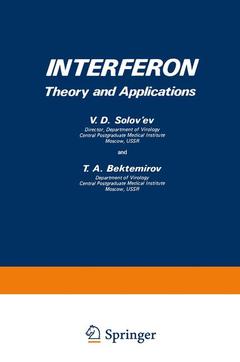Interferon has been and continues to be one of the more fas cinating substances produced by apparently all animals in response to particular stimuli. It has led to major revisions in concepts of cellular immunity and theories on the recovery of multicellular systems from viral infection. Since its discovery, interferon has held the interest of the molecular biologist, and definitive answers as to its clinical value are close at hand. The following treatise is an attempt by the authors to pre sent a complete picture of the many aspects of interferon. Having recently had the privilege of visiting the laboratories of the au thors and several others of our Soviet colleagues working in the interferon field, I was most impressed with the amount of research being done in this area. Since a great deal of this work is published in the Russian language, there is unfortunately a time lag until it can be received and translated. We are therefore most grateful to Drs. Solov'ev and Bektemirov for having produced this impres sive work which offers the opportunity to review the entire field and, very importantly, some of the work being done by our Soviet counterparts, and also to Plenum Publishing Corporation for pro viding the English translation. Work on the mechanism of interferon induction, the relative role of the cellular constituents, and work in cell-free systems and the molecular mechanism of the antiviral action of interferon continues to excite scientists in the field.




